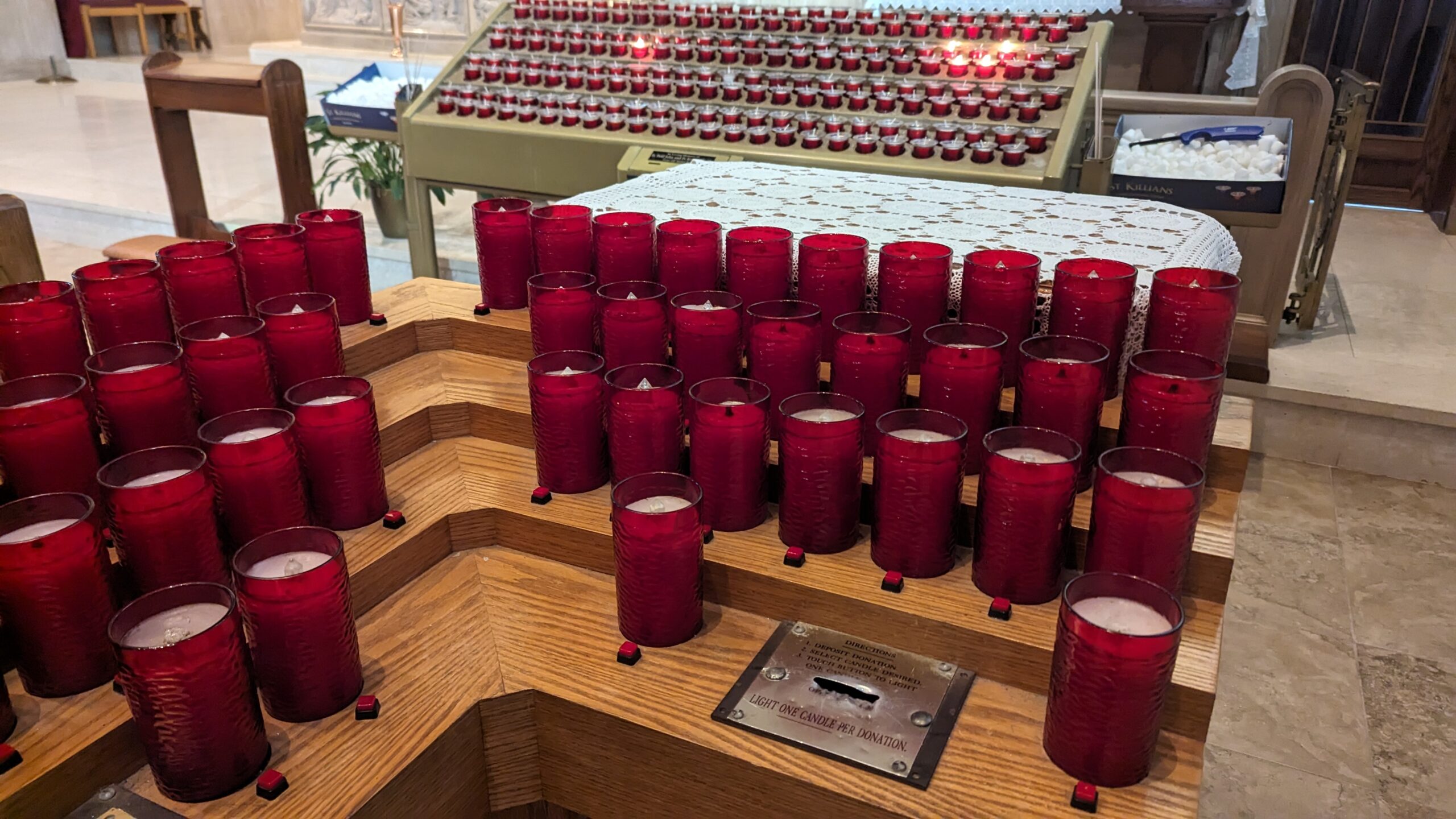
NEW YORK — An elderly woman stood over an array of mostly unlit candles at St. Barnabas Roman Catholic Church, which is located in a heavily Irish neighborhood on the border between The Bronx and Yonkers. Dusk hung heavy inside the nave as the raw, rainy evening filtered through dark stained glass. Three or four lit candles weakly brightened the dim space, leaving a detailed painting of Jesus peeking through the shadows on the high ceiling.
The woman arched her head downward. Two middle aged men leaned on either side of her, the three bodies close, their puffy winter coats forming one whole. They were silent, but their emotion — unmistakeable grief — cut across the room. After a moment, the trio quickly shuffled into the growing crowd of congregants.
It was Sunday evening at St. Barnabas, located at 409 East 242nd Street. Sturdy and rectangular, the Italianate-style church has beckoned Woodlawn’s Catholics for Sabbath celebrations since 1911. On the Catholic liturgical calendar, it was the Fourth in Ordinary Time and the faithful were quietly taking their places in the church’s long wooden pews. Filling up yet leaving everyone with ample personal space, a few families and many lone elders took their seats. Some dressed casually — tight jeans and a fleece — while others were more proper — a suit and tie under a tan peacoat.
Walking the line between the two styles, a polished 20-something in a shirt with a loose top button and no tie walked past the pews. He brought a narrow binder from the sacristy, a bright white room where the priest and altar servers prepared for the 5 o’clock mass, due to start in about two minutes.
The lights flashed on in dramatic fashion, yellowish LEDs supplanting the wiggling candle glow. The elaborate fresco-style painting above the altar led all eyes to Jesus Christ, heroically pictured at the center, surrounded by the Holy Family, the Apostles and flying cherubs. Around the altar, floral arrangements, green, white and red-orange evoked, perhaps by coincidence, the Irish Republican tricolors flying throughout the neighborhood.
The young man read a few announcements from a binder. He welcomed visitors, proclaimed that St. Patrick’s Day was fast approaching (it was still January), and read out a Wikipedia-style appeal for donations.
“If everyone here today donated…”
After mass, a few more people approached the candles. There were six separate arrays — two at the back, four at the front, including two dated-looking tables of electronic “candles” with push buttons that could light up your plastic tube of choice. The real candles were far more popular; none of the electric candles were turned on.
Names were engraved on the edge of the arrays, recalling the memory of various parishioners. Boxes with small slots hung beneath the candles, instructing how to donate if you wish to light one. One woman dropped a few dollars in the box. She lit two candles and knelt deeply before them, whispering a prayer.
Soon, she rushed off, perhaps bothered by my presence, and I decided to let her be.
Outside, I caught up with the fashionable lector named Terrance Tunnock (“T-U-N-N-O-C-K… Like the tea biscuit”) who told me he reads every week at 5 p.m. He said the candles are for special intentions, hopes, wishes, prayers. Often, people light candles for those they have lost.
As the dusk turned to night, the nave emptied out. Tunnock began tidying up around the church entrance, the priest returned to the sacristy, and the candles burned.
